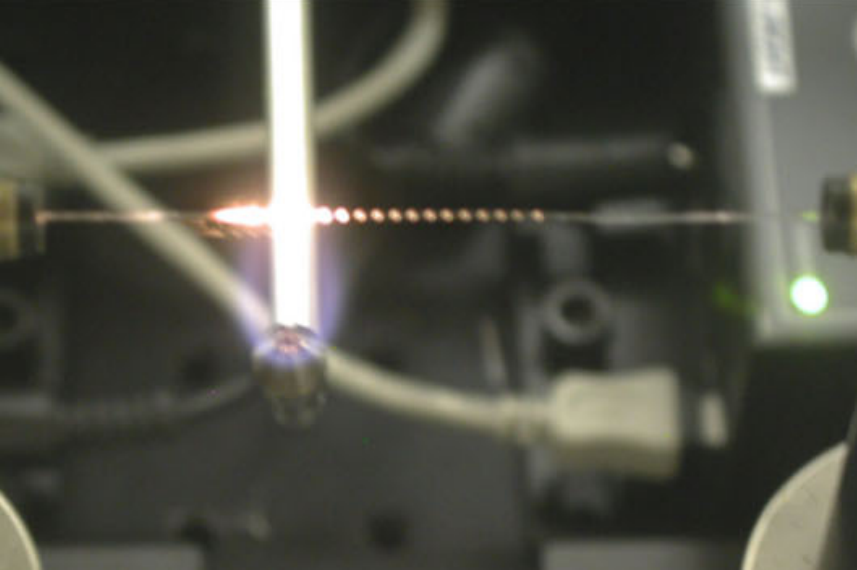Camila Faccini de Lima, Fan Wang, Troy A. Leffel, Tyson Miller, Steven G. Johnson, and Alexander Gumennik published in Nature Communications, titled "Multimaterial fiber as a physical simulator of a capillary instability." Important supplementary information is available here. The Luddy School at Indiaan University also reported on the topic here.
Monofilament fibers, created by the thermal draw process, can be used as a platform for various functional devices and systems, with applications in fields like fiber optics, signal transduction, energy management, and even computational capabilities. The process of making these fibers involves melting and shaping materials, which is a complex and chaotic fluid dynamics process. One specific application is using capillary instability to pattern the fiber, which can resemble chaotic behavior. This instability is used to create photonic devices and systems like diodes and photodetectors. However, despite extensive research, the breakup process in these fibers is often unpredictable. This publication introduces a mathematical model to better understand and control the breakup process with the goal of achieving predictable and coherent outcomes in fiber assembly. The chaotic breakup process can be predictable if the fiber is exposed to a specific temperature pattern, which changes the viscosity in a way that matches the breakup wavelength. This pattern acts like a filter, letting only one wavelength develop in a predictable manner, following certain dynamics. Significant simulation and experimental work was conducted by the authors. The supplementary videos of the paper are shown below.


